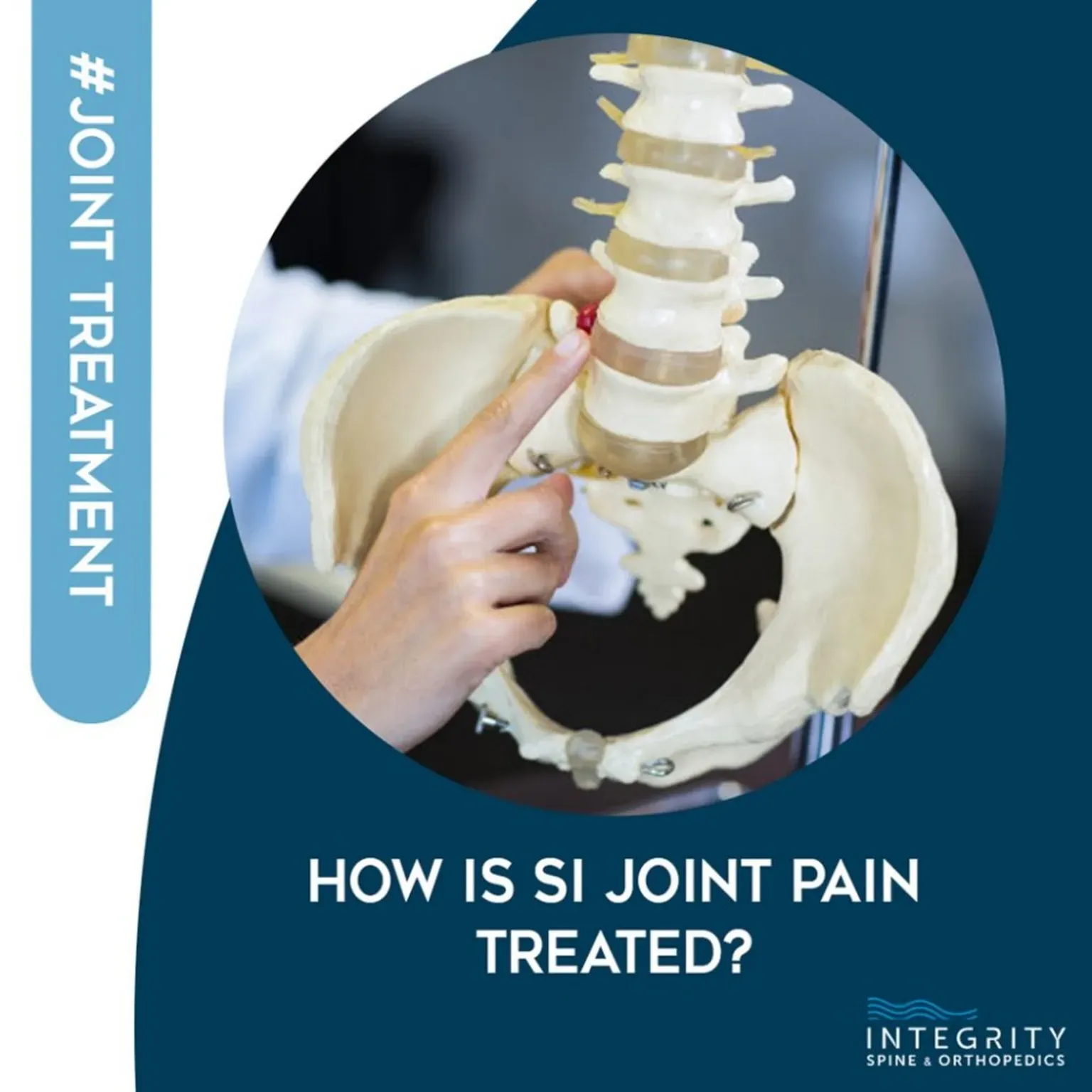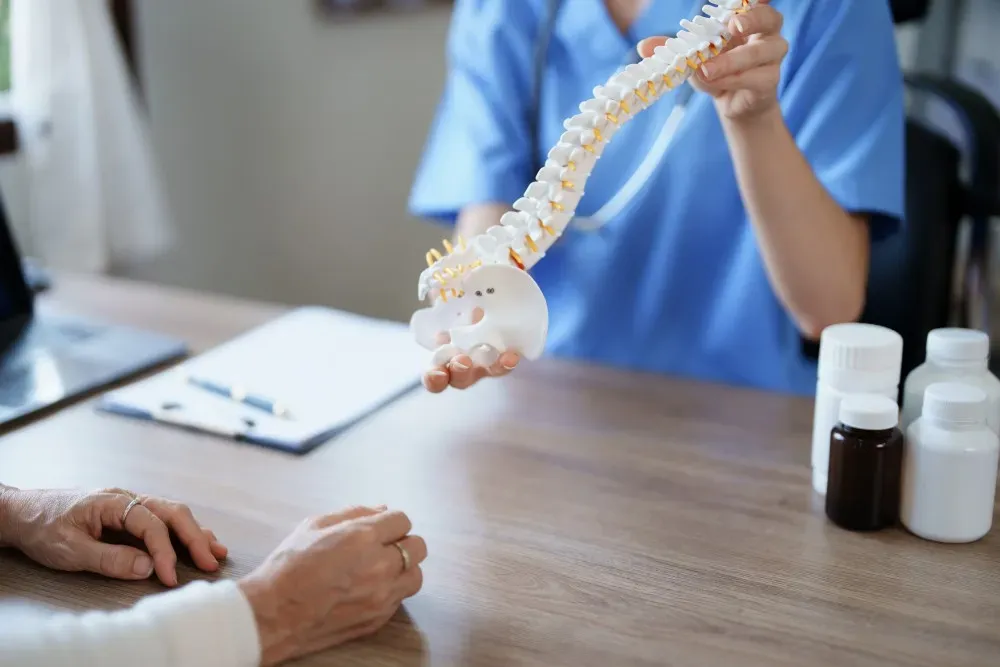Neurosurgery & Orthopedic Surgeons in Jacksonville

How is SI Joint Pain Treated?
Sacroiliac (SI) joint pain is a common cause of low back pain. The two SI joints in the spine connect the bottom of the spine (sacrum) to the tops of the hip bones (ilia) on both sides of the body.
Sacroiliac (SI) joint pain is a common cause of low back pain. The two SI joints in the spine connect the bottom of the spine (sacrum) to the tops of the hip bones (ilia) on both sides of the body. By themselves, the SI joints don’t have a lot of movement. Their primary purpose is to support and stabilize the spine and distribute weight evenly across the pelvis during movement.
Inflammation, hypermobility (excessive mobility), or hypomobility (too little movement) of one of the SI joints leads to pain, stiffness, weakness and instability in the low back, buttock, hip, groin and thigh. Luckily, there are several treatment options available for SI joint pain. Keep reading to find out what they are.
DIAGNOSIS
An SI joint problem can be very difficult to diagnose because the symptoms mimic those of several common back conditions like a herniated disc or sciatica. Your doctor will perform multiple diagnostic tests to make an accurate diagnosis.
- Medical history. Your doctor will take a medical history and ask you about past injuries or accidents that could lead to pain.
- Physical exam. Your doctor may ask you to perform several orthopedic tests that point to the SI joint as the source of pain.
- Imaging tests. Your doctor may order an X-ray, MRI, or CT scan to rule out other sources of pain.
- Diagnostic nerve block. Your doctor may inject a solution with a numbing agent into the sacroiliac joint. If the injection results in pain relief, that confirms the SI joint is the source of pain.
Once your doctor makes an accurate diagnosis, he or she will create a treatment plan to address your pain and symptoms.
TREATMENT OPTIONS
Many cases of SI joint pain are successfully managed with non-surgical measures. The goals of treatment are to reduce pain and restore normal function in the joint. Depending on the cause of pain and dysfunction, conservative treatments can resolve symptoms completely within a few weeks or months. If pain is due to an underlying chronic condition (like osteoarthritis), the right treatment can help you manage symptoms and improve your quality of life.
Your physician-prescribed treatment plan will probably include a combination of the following:
- Ice and heat therapy. Ice packs applied several times a day can help reduce pain, inflammation and swelling in the low back and pelvis. Heat packs applied several times a day can help relieve pain and soothe tight, tense muscles that are contributing to pain.
- Medications. Your doctor will recommend taking over-the-counter NSAIDs (aspirin, naproxen, ibuprofen) to relieve mild to moderate pain and discomfort. If you’re experiencing episodes of severe pain, your doctor can prescribe a short-term course of muscle relaxants or stronger painkillers until your pain is back to a more manageable level. These prescription-level drugs can be highly addictive and cause serious side effects, so proceed with caution and only take them as necessary.
- Steroid injections. Cortisone is a powerful anti-inflammatory medication that provides temporary pain relief. During the treatment, a corticosteroid solution is injected directly into the SI joint, where it works to reduce inflammation in the area. A steroid injection is not a permanent solution — the effects last anywhere from a few months to up to a year or longer before wearing off. But the period of pain relief buys you more time to pursue physical therapy and begin restoring normal joint mobility and function.
- Radiofrequency ablation (RFA). RFA is a safe, minimally invasive procedure that targets the source of pain. The procedure uses heat to damage or destroy the nerve root tissues that carry pain signals from the SI joint to the brain. RFA can be repeated if the nerve tissue grows back.
- Assistive devices. If excessive movement of the SI joint is causing pain, your doctor might recommend a pelvis brace to support and stabilize the joint.
- Physical therapy. Physical therapy is beneficial to strengthen the structures supporting the SI joint and restore normal function to the joint. A physical therapy care plan might include stretches to reduce tension in the low back and pelvis, along with exercises to strengthen the low back and core muscles that support the SI joint.
- Alternative therapies. Alternative therapies like chiropractic manipulation or acupuncture might be able to help you find pain relief.
You may need to try several different treatments, or a combination of treatments, before finding a plan that offers the most effective relief.
WHEN IS SURGERY NECESSARY?
Surgery is necessary if the sacroiliac joint is causing significant pain that’s affecting your ability to perform daily activities. Before recommending surgery, your doctor will exhaust all avenues for non-surgical treatments. However, if several weeks or months of conservative measures aren’t effectively relieving your pain, your doctor will recommend a joint fusion surgery.
During the procedure, the ilium and sacrum are fused using implanted screws, rods and bone grafts. A successful fusion surgery eliminates painful movement at the joint level, relieves pain, and restores normal mobility in the low back and pelvis.
At Integrity Spine and Orthopedics, our board-certified surgeons use minimally invasive techniques to perform spine fusion surgery on an outpatient basis. Minimally invasive surgeries require smaller incisions, cause less muscle and tendon damage and lower the risk of post-op infections. We’ve found that because minimally invasive procedures cause less damage to the surrounding soft tissues, our patients experience less pain and less reliance on narcotic medications following surgery. The recovery time is faster and many of our patients are back to their normal activities within a few weeks.
INTEGRITY SPINE AND ORTHOPEDICS SPECIALIZES IN MINIMALLY INVASIVE SURGERY
At Integrity Spine and Orthopedics, our board-certified and fellowship-trained surgeons specialize in performing minimally invasive spine surgery to treat painful conditions like compressed nerves, slipped discs, SI joint dysfunction, spinal stenosis, spinal arthritis, degenerative disc disease and spinal deformities. Our Jacksonville, Florida, clinic also provides pain management and orthopedic care services.
If you’re ready to get back on your feet and back to doing the activities you love, call us or reach out online to schedule an appointment.




